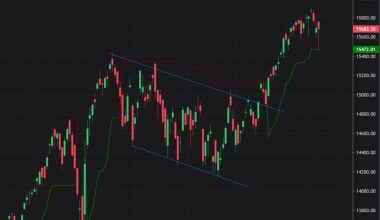by Krishnaprasad N B
By the first half of this year, commodity prices were driven by the supply chain disruption and global inflationary pressure from Russia’s invasion of Ukraine. Concerns about low demand from China due to the country’s re-introduced Covid restrictions and worries about a slowing economy were weighing on the market. Inflation was not a serious concern two years ago even when the global economy was hit by pandemic-induced recession, because the central banks and governments have announced policy measures to revive economic activity. As a result, employment started to pick momentum, while the inflation rate began to rise. During this period, most of the policymakers acknowledged that price hikes were “transitory” due to the clogged supply chains and labor shortages. However, it worsened when the global economy was hit by soaring energy and food prices triggered in part by Russia’s invasion of Ukraine. The annual Inflation in the United States, the world’s largest economy, hit a four-decade high of 9.1% in June, which was well above the inflation target of the US Federal Reserve. To clamp down inflation, the central bank started an aggressive rate hike measure. Meanwhile, inflation in the Euro zone hit a new record high of 8.6% in June and the European Central Bank raised its interest rate for the first time in more than 11 years.
International Monetary Fund (IMF), a global financial institution, is likely to cut its global growth forecast further in its next review. Previously, after Russia’s invasion of Ukraine, IMF had downgraded its outlook for the global expansion this year to 3.6% in its April report.
Gold prices closed almost on a flat note by resting above USD1800 an ounce in the first half of this year. As the Ukraine conflict hit headlines and investors sought safe haven assets amid rising geopolitical uncertainties, the price of gold initially climbed this year. But as investors’ attention shifted to monetary policy and increased bond rates, gold lost some of those early gains in the second quarter amid tussle between economic slowdown and rising interest rates. Persistently high inflation in major economies and the outcomes from the extended situation in Ukraine, which pose threat to global growth, factored in gold prices. It was evident in gold exchange-traded fund (ETF) flows, as well as COMEX net long positioning. By the end of June, gold ETFs had amassed US$15.3bn (242 tonnes) of inflows year-to-date. Whereas, weakening domestic currency gave additional support for Indian gold prices. At the same time, silver in the international platform settled near two-year lows in the first half of this year by moving in tandem with yellow metal. The fall in silver prices were accelerated due to subdued industrial demand for the white metal. Silver prices closed just above USD20 an ounce by shedding almost seven dollars from its March high.
Although the bullion market has been negatively impacted by increase in interest rate, the market appears to have already discounted this possibility. Additionally, it is anticipated that persistent inflation and geopolitical worries would underpin precious metals.
The price of energy commodities fluctuated wildly in the first half of 2022. The demand supply mismatch in the crude oil and natural gas market following the Russian invasion in Ukraine mainly drove the prices. As the oil crisis worsened and western nations began to impose sanctions on Russia, inflation in the major economies remained high. Russia is a major player who fulfills European Union’s energy needs. Many European consumers ceased purchasing Russian oil in April and May and came out with six packages of sanctions on Russian oil as part of their plans to reduce the dependency on Russian oil by 90 percent by the end of 2022. While OPEC+, a group of 23 oil exporting countries, stance on gradually increasing output after slashing production by 10 million barrels a day further supported the prices. The West Texas Intermediate light sweet crude oil futures traded in New York Mercantile Exchange (NYMEX) gained more than 40 percent and finally closed at USD 106.01/barrel, meanwhile, North sea’s Brent variant Intercontinental Exchange (ICE) gained near to 50% and settled near USD 115/barrel. At the same time, US natural gas surged above USD 9 per million British thermal units for the time since 2008, during the late May on robust heating demand and solid buying from Europe and Asian countries. However, prices tumbled in June due to oversupply and slow exports of products after Freeport LNG terminal shut down. In Europe, there was no outright import ban for Russian gas, although Euro bloc had expressed their commitment to reduce gas imports by two third within a year. But the region is still struggling to replace its dependency Russian gas supplies.
Uncertainty in the energy market may still persist and continue due to a number of factors. The oil price is still being weighed down by high prices and a deteriorating economy, and the price correction may be constrained by ongoing supply constraints and a potential recovery in the Chinese economy. While the current uncertainty over Russian gas supplies and the transition to clean energy continue to support on a larger scale, natural gas prices are likely to stabilize as high prices could continue to depress demand.
Most of the base metals surged in the first quarter of this year amid tight supplies constraints as global industries already started stockpiling metals as inventories remain low following a 2021 global market deficit in metals including copper, aluminum nickel and zinc. Besides, geopolitical sanctions on Russian metals further boosted the price sentiments. However, by the second quarter, base metals tumbled from this year peaks on worries of an economic downturn after global central banks began to raise interest rates to combat inflation. While weak demand from the top consumer China, where “zero-covid policy” measures disrupted manufacturing, further pressured the metal prices as well. Copper, Aluminum and Zinc prices on Multi Commodity Exchange (MCX) platforms slipped from the record high made during mid of first half and settled at multi months lows. Meanwhile, Nickel prices slipped heavily from record high and was almost inactive in MCX platform by the end of second quarter. This was after world’s biggest stainless steelmaker and major ferronickel producer Tsingshan held a short position in London Metal exchange, which led to market suspension resulting in trade cancellations. In MCX base metal complex, movement in lead was rather moderate during first half as lower consumption from China and global supply surplus weighed the metal prices.
A combination of sharp hike in interest rates, strengthening US dollar, and improved supply prospects are likely to put the base metals market under pressure in the near term.







